-
Molecule “scanner” uses terahertz radiation to identify single molecules
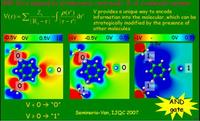
Molecules could soon be “scanned” in a fashion similar to imaging screenings at airports, thanks to the world’s smallest terahertz detector, developed by University of Pittsburgh physicists. The scanner has the ability chemically to identify single molecules using terahertz radiation — a range of light far below what the eye can detect.
-
-
Eighty-six collegiate teams compete for the best car design and build
Eighty-six teams competed in the Baja Society of Automotive Engineers competition in Bellingham, Washington to determine the Baja car with the best design and build. Every year, collegiate automotive clubs enter to compete in any of the three national competitions that test the design, speed, maneuverability, and endurance of a student-manufactured Baja car — a frame-only vehicle used for off-roading and high adventure activity. Arizona State University’s Sun Devil Motorsports Team improved its ranking from 37th last year to 17th this year.
-
-
Man-induced quakes to help in building safer, sturdier buildings
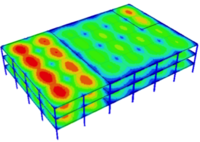
A team led by Johns Hopkins structural engineers is shaking up a building in the name of science and safety. Using massive moving platforms and an array of sensors and cameras, the researchers are trying to find out how well a two-story building made of cold-formed steel can stand up to a lab-generated Southern California quake.
-
-
Climate change threatens world food security
The last few decades have witnessed a substantial decline in the number of hungry people worldwide. Since 2007, however, progress has slowed and world food supply and demand have been precariously balanced — climate change threatens to tip this balance, most dramatically in the poorer areas of the world.
-
-
U.S. Navy, City of Chicago team up to promote STEM education
The Department of the Navy (DoN) and City of Chicago last month kicked off a unique collaboration to give high school and community college students an intense, hands-on experience in naval-relevant science, technology, engineering and mathematics (STEM) education.
-
-
Locating criminals by tracking their cell phones’ digital fingerprints
To keep from being tracked and getting caught, criminals use evasion tactics such as modifying the built-in ID code in their cell phone or swapping out SIM cards, making it impossible for law enforcement to track the criminals down by relying solely on cell phone signals. German engineers found, however, that the radio hardware in a cellphone — a collection of components like power amplifiers, oscillators, and signal mixers — all introduce radio signal inaccuracies. When these inaccuracies, or errors, are taken together, as seen in the digital signal sent to a cell tower, the result can be read as a unique digital signal –a digital fingerprint. These digital fingerprints do not change even if the built-in ID code has been modified, or the SIM card has been swapped out.
-
-
Water reservoirs for hydroelectric dams are sources of greenhouse gas emissions
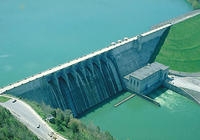
The large reservoirs of water behind the world’s 50,000 large dams are a known source of methane. Like carbon dioxide, methane is one of the greenhouse gases which trap heat near Earth’s surface and contribute to global warming. Methane, however, has a warming effect twenty-five times more powerful than carbon dioxide. The methane comes from organic matter in the sediments that accumulate behind dams.
-
-
Dams play an important role in water pollution control
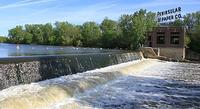
Small dams, reservoirs and ponds trap water pollution, which provides an important benefit to water resources. This is especially relevant in agricultural lands of the Midwest U.S., where there are lots of small, but aging, dams.
-
-
Climate change may fuel extreme wildfires
Climate change may be fueling the larger and more destructive wildfires which are scorching vast areas of the American West, according to new research. August 2012 saw 3.6 million acres burn in the region, the most of any August since 2000. There were, however, only 6,948 fires in August 2012 — the second fewest in that 12-year timeframe — meaning the fires were much larger.
-
-
Bacteria to clean contaminated leftover water used in fracking
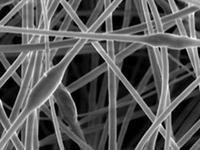
Fracking is a drilling technique which uses lots of water — up to 5-7 million gallons per frack. One well may be fracked several times. The water goes in clean and comes out contaminated with organic substances that render it unfit for reuse. Purifying that water would reduce the pressure on waste disposal sites called injection wells, as well as on sites of wastewater spills. Researchers say that bacteria may someday clean leftover frack water.
-
-
Quake Summit 2013: showcasing research on earthquakes, tsunamis
Members of a national earthquake simulation research network next week will gather at the University of Nevada, Reno (UNR), for Quake Summit 2013, a scientific meeting highlighting research on mitigating the impact of devastating earthquakes and tsunamis. Titled “Earthquake & Multi-Hazards Resilience: Progress and Challenges,” the annual summit of the 14-site George E. Brown Network for Earthquake Engineering Simulation (NEES), will run from 6 August through 8 August at UNR’s Joseph Crowley Student Center.
-
-
Online tools accelerate progress in earthquake engineering, science
A new study has found that on-line tools, access to experimental data, and other services provided through “cyberinfrastructure” are helping to accelerate progress in earthquake engineering and science. The cyberinfrastructure includes a centrally maintained, Web-based science gateway called NEEShub, which houses experimental results and makes them available for reuse by researchers, practitioners, and educational communities. NEEShub contains more than 1.6 million project files stored in more than 398,000 project directories and has been shown to have at least 65,000 users over the past year.
-
-
Simulations help in studying earthquake dampers for structures
Researchers have demonstrated the reliability and efficiency of “real-time hybrid simulation” for testing a type of powerful damping system that might be installed in buildings and bridges to reduce structural damage and injuries during earthquakes. The magnetorheological-fluid dampers are shock-absorbing devices containing a liquid that becomes far more viscous when a magnetic field is applied.
-
-
Raw cotton offers new, ecologically friendly way to clean up oil spills

The Deepwater Horizon disaster highlighted the need for better ways of cleaning up oil spills. A new solution addresses this need. It is based on the finding that unprocessed, raw cotton may be an ideal, ecologically friendly answer, with an amazing ability to sop up oil.
-
-
Cost of Arctic methane release could be “size of global economy”: experts
As the Arctic warms and sea ice melts at an unprecedented rate, hitting a record low last summer, the thawing of offshore “permafrost” in the region is releasing methane, a powerful greenhouse gas. Economic modeling shows that the possible methane emissions caused by shrinking sea ice from just one area of the Arctic, the East Siberian Sea, could come with a global price tag of $60 trillion — the size of the world economy in 2012.
-
More headlines
The long view
Autonomous Vehicle Technology Vulnerable to Road Object Spoofing and Vanishing Attacks
Researchers have demonstrated the potentially hazardous vulnerabilities associated with the technology called LiDAR, or Light Detection and Ranging, many autonomous vehicles use to navigate streets, roads and highways. The researchers have shown how to use lasers to fool LiDAR into “seeing” objects that are not present and missing those that are – deficiencies that can cause unwarranted and unsafe braking or collisions.
Tantalizing Method to Study Cyberdeterrence
By Trina West
Tantalus is unlike most war games because it is experimental instead of experiential — the immersive game differs by overlapping scientific rigor and quantitative assessment methods with the experimental sciences, and experimental war gaming provides insightful data for real-world cyberattacks.
Prototype Self-Service Screening System Unveiled
TSA and DHS S&T unveiled a prototype checkpoint technology, the self-service screening system, at Harry Reid International Airport (LAS) in Las Vegas, NV. The aim is to provide a near self-sufficient passenger screening process while enabling passengers to directly receive on-person alarm information and allow for the passenger self-resolution of those alarms.
Falling Space Debris: How High Is the Risk I'll Get Hit?
By Zulfikar Abbany, Julia Vergin, and Katja Sterzik
An International Space Station battery fell back to Earth and, luckily, splashed down harmlessly in the Atlantic. Should we have worried? Space debris reenters our atmosphere every week.
Testing Cutting-Edge Counter-Drone Technology
Drones have many positive applications, bad actors can use them for nefarious purposes. Two recent field demonstrations brought government, academia, and industry together to evaluate innovative counter-unmanned aircraft systems.
Strengthening the Grid’s ‘Backbone’ with Hydropower
By Michael Matz
Argonne-led studies investigate how hydropower could help add more clean energy to the grid, how it generates value as grids add more renewable energy, and how liner technology can improve hydropower efficiency.
